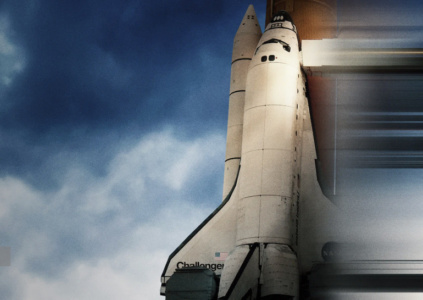
January 28, 1986 is one of the blackest dates in the history of astronautics. And although a lot has been said about the events of those days in the 34 years since the Challenger disaster, we recommend that you pay attention to the Challenger: The Final Flight miniseries from Netflix and listen to this story again.
Genre documentary series
Created by Stephen Leckhard and Glen Zipper
Netflix channel
Release year 2020
Series 4
IMDb sites
Steven Leckhardt, Glen Zipper and JJ Abrams’ Bad Robot Productions, who produced the series (the studio worked on the Cloverfield film series, the three Star Trek remasters, the last three Mission: Impossible, two of the three new Star Wars, and dozens of series , including Westworld , Castle Rock , 11.22.63 , Almost Human , Fringe and Lost) focused not on the technical aspects of the Challenger disaster, but on the people who took part in the launch preparations and on the astronauts who fell victim to self-confidence and arrogance NASA.
No, the series has enough technical details regarding the failure of the solid propellant booster, the problem of burning the O-ring, and the danger of launching shuttles in cold weather. But the emphasis is not on them, but on the political, marketing and propaganda aspect of the Space Shuttle program, on how dependent NASA became in the 80s. of the last century from public opinion, on the people who made that same fateful decision to launch, and on the astronauts who fell victim to this decision.
It is worth understanding how the Challenger shuttle disaster turned out for the United States. America has been waiting for this launch like no other since the Apollo lunar missions. For the first time, not a trained NASA astronaut, a military pilot or a scientist was supposed to go into space, but a school teacher, a completely ordinary person, one of ordinary Americans who could not even dream of becoming on a par with the celestials. The Americans closely followed the selection of candidates (and 11,000 teachers applied for participation in the competition!), all the stages of preparation of the Boston teacher and mother of two children Christa McAuliffe for the flight. The start was broadcast in school auditoriums and cafeterias across the country. The children gathered for this event as if it were a holiday, prepared crackers, confetti, treats…
For many schoolchildren who watched that broadcast, the death of astronauts on the air was the first experience associated with death, shock and the cause of mental disorders. And there are tens of thousands of such people in the United States. According to the Americans themselves, the Challenger disaster was a shock for them, comparable to the shock of the assassination of President John F. Kennedy. A nationwide tragedy, from which the country will move away for several more years.
The authors of Challenger: The Final Flight pay attention to both the history of the Space Shuttle program itself and the preparations for this particular flight, its propaganda value. In addition to well-known and rare archival footage, the series contains many modern interviews with direct participants in those events. The astronauts’ wives and children, Christa McAuliffe’s sister, the people who were at Cape Canaveral and Mission Control that day, journalists, NASA officials of the day, and representatives of contractors involved in the Space Shuttle program.
Particular attention, of course, is paid to the people who took part in that fateful telephone conference on January 27, 1986 between representatives of NASA and Thiokol (manufacturers of solid-fuel boosters), at which the final decision was made to launch on January 28. People who objected to the launch; people who insisted on the need to comply with the flight schedule; people who did not find the strength to resist the pressure of seniors. Now, 34 years later, almost all the participants in that meeting are very old people. Some of them, those who are directly to blame for what happened, still believe that they were right and, given the available data, would have made the same decision today. Others have been blaming themselves every day for 34 years for not doing everything in their power to cancel the launch. The families of the dead astronauts never forgave the participants of that meeting.
It is tragic that for all the dissimilarity between the USSR and the USA, cosmonauts and astronauts of both countries often became hostages of politics. Only if in the USSR the bosses of the Communist Party customized launches for socialist holidays, then in the USA the flaws of the democratic system became the cause of disasters – the need to justify the allocation of funds for NASA and to comply with the tight schedule of launches. And despite the lessons learned from the Challenger disaster, the same factors will cause the Columbia shuttle disaster 17 years from now. Self-confidence, ignoring a long-known problem, the need to adhere to the launch schedule.
Challenger: The Final Flight is a very emotional series. Much time here is devoted to interviews with the astronauts’ wives and relatives, who talk about their families, about the preparations for that launch, about the last evening before the launch, and what followed after the Challenger turned into a fireball in the sky. These are very touching and very difficult episodes that transform the set of names of the astronauts who died in the crash into real people, husbands, fathers, sons and daughters. Some of these moments are hard to hold back tears.
Undoubtedly, everyone who is fond of space is perfectly familiar with the details of the Challenger disaster. Dozens of articles and books have been written about this tragedy, hundreds of TV spots and several documentaries have been filmed. Nevertheless, even if you are well aware of all the details, pay attention to Challenger: The Final Flight. Along with last year’s Apollo 11 , this is one of the best space documentaries released in recent times.




